Webinar: Redevelopment Funding Opportunities from the Ohio Department of Development
Wednesday, January 31st – 1:00 pm – 2:00 pm
Join us for a conversation about community redevelopment and the funds available through the Ohio Department of Development to assist your projects. Funding opportunities to be discussed include:
Welcome Home Ohio
The Welcome Home Ohio (WHO) program is designed to provide grants for the purchase of qualifying residential properties, the cost of construction or rehabilitation, or a nonrefundable tax credit for qualifying activities.
Brownfield Remediation Program
The Brownfield Remediation Program provides grants for the cleanup of brownfield sites, to assist in the remediation of hazardous substances or petroleum at an industrial, commercial, or institutional property. Remediation includes acquisition of a brownfield, demolition performed at a brownfield, and the installation or upgrade of the minimum amount of infrastructure necessary to make a brownfield site operational for economic development activity.
Building Demolition and Site Revitalization Program
The Building Demolition and Site Revitalization Program is designed to provide grants for the demolition of commercial and residential buildings and revitalization of surrounding properties on sites that are not Brownfields.
Water and Wastewater Infrastructure Grant Program
The Water and Wastewater Infrastructure Grant Program provides grants to improve access to clean drinking water and wastewater infrastructure. Grants of up to $5 million for construction projects are available to Ohio communities. All political subdivisions with the authority to own and operate public water and sewer systems and non-profit, non-community public water systems may submit an application

Webinar: Historic Preservation Commissions: The Legal Basics
Wednesday, February 21st – 1:00 pm – 2:00 pm
The strongest defense commissions have against accusations of arbitrary and capricious decisions is to consistently follow established review procedures. Customized for each state, this workshop covers the legal basis for commission operation. This presentation will provide an overview of procedural due process, takings, appeals, property rights, and economic hardship. Participants will examine common preservation legal issues and acquire tools to improve decision-making and build a defensible record.
About our presenter:
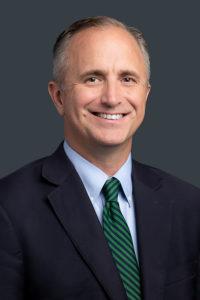 Will Cook is a nationally recognized lawyer and scholar with a successful record for protecting National Historic Landmarks, significant landscapes, historic viewsheds, and traditional cultural properties. His practice focuses on balancing historic preservation with economic development so that historic preservation law is more efficient, effective, and predictable. Will helps his clients navigate the Section 106 process of the National Historic Preservation Act at the project level with an emphasis on historic viewsheds and landscape protection. He negotiates on behalf of tribes, project proponents, local governments, and other consulting parties to achieve creative, win-win outcomes that appropriately balance preservation values and development needs. Examples of his work include helping to find reasonable limits to unregulated cruise tourism in historic port communities, advising a local government with a National Historic Landmark district on its legal rights in response to proposed offshore utility-scale windfarms, and working with a nationally recognized preservation advocacy group on how to address a proposed seawall that would surround a National Historic Landmark district.
Will Cook is a nationally recognized lawyer and scholar with a successful record for protecting National Historic Landmarks, significant landscapes, historic viewsheds, and traditional cultural properties. His practice focuses on balancing historic preservation with economic development so that historic preservation law is more efficient, effective, and predictable. Will helps his clients navigate the Section 106 process of the National Historic Preservation Act at the project level with an emphasis on historic viewsheds and landscape protection. He negotiates on behalf of tribes, project proponents, local governments, and other consulting parties to achieve creative, win-win outcomes that appropriately balance preservation values and development needs. Examples of his work include helping to find reasonable limits to unregulated cruise tourism in historic port communities, advising a local government with a National Historic Landmark district on its legal rights in response to proposed offshore utility-scale windfarms, and working with a nationally recognized preservation advocacy group on how to address a proposed seawall that would surround a National Historic Landmark district.
In 2019, Will assisted the Parks & People Foundation in Baltimore with identifying ways to use Section 106 to leverage shoreline restoration of the Middle Branch Harbor and proposed “green” urban park along its 11-mile shoreline. Will’s extensive knowledge of preservation legal tools and land use law allows him to serve as a strategic partner with policymakers, developers, and preservation advocates on best practices to make preservation law more effective and efficient. Examples include assisting the City of Philadelphia and the Town of Palm Beach with identifying strengths and weaknesses in their local preservation laws, suggesting opportunities for improvement based on peer city reviews, and helping educate the public about preservation law’s benefits. Through his work with the National Alliance of Preservation Commission’s Disaster Planning Advisory Committee, Will helps historic communities with adaptation planning and disaster relief, including their response to the COVID-19 pandemic. Will has argued in court and before administrative agencies across the country on behalf of advocates seeking to protect traditional cultural properties: historic places that continue to be used by living communities. His engagements have included arguing on behalf of the National Trust for Historic Preservation before the New Mexico Supreme Court, which affirmed unanimously Mount Taylor’s designation in New Mexico’s State Register of Cultural Properties.
Will earned his Juris Doctor from the University of South Carolina School of Law, and is a graduate of Furman University, where he received a B.A. in political science. Prior to joining Cultural Heritage Partners, Will served for eight years as associate general counsel for the National Trust for Historic Preservation and teaches preservation law at Columbia University.

Webinar: Maybe Your Downtown Could Use a Heart Transplant?
Wednesday, November 29th – 1:00 pm – 2:00 pm
Join us as we welcome back former Heritage Ohio director of revitalization, Jeff Siegler, to celebrate the release of his first book, Your City is Sick. Jeff will share what he’s been up to since his days at Heritage Ohio, and delve into the details of the book, including why everyone should purchase multiple copies, and what else he is working on.
About our presenter:
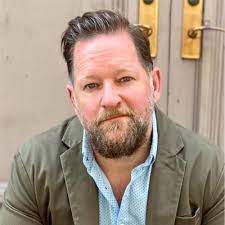 Jeff Siegler is a writer, speaker, and consultant concerned with the powerful role place plays in our lives. He is the founder of the civic pride consulting firm, Revitalize, or Die. After obtaining his master’s degree in Urban Planning from Virginia Commonwealth University, Jeff went to work on Main Street, first as a downtown manager, and later as the Ohio Main Street State Coordinator. His first book, Your City is Sick, was released this past September. Jeff and his wife Amber and their four kids call Pittsburgh home.
Jeff Siegler is a writer, speaker, and consultant concerned with the powerful role place plays in our lives. He is the founder of the civic pride consulting firm, Revitalize, or Die. After obtaining his master’s degree in Urban Planning from Virginia Commonwealth University, Jeff went to work on Main Street, first as a downtown manager, and later as the Ohio Main Street State Coordinator. His first book, Your City is Sick, was released this past September. Jeff and his wife Amber and their four kids call Pittsburgh home.

Webinar: Historic Properties and Affordable Housing in Ohio’s Appalachia Region
Wednesday, January 17th – 1:00 pm – 2:00 pm
Most small towns in rural Ohio are blighted by older homes in varying states of dilapidation. Many of these homes are no longer occupied or even occupiable. Often these houses, while perhaps lacking in historical significance, nonetheless are representative of their communities’ cultural heritage. Thus, their loss, in addition to being a significant economic negative and a loss of affordable housing stock, also constitutes an erosion of architectural distinctness and community identify. But unlike historic properties, for which numerous programs exist to encourage and support their preservation, such “heritage housing” has received little comparable attention. This phenomenon presents an opportunity in which the rehabilitation of older housing stock can improve affordable first-time home ownership while generating employment, income, and wealth, and preserving community identity.
Mr. Lane will discuss his research at the Ohio University Voinovich School of leadership and Public Service which examined the opportunity to enhance Athens County’s supply of more affordable housing through the rehabilitation of older single-family houses – “heritage houses” – that have fallen into disrepair and are uninhabited. In this study, the term “attainable heritage housing” was coined to describe existing older home in need of repair, that are priced below conventional definitions of affordability and which – while typically lacking in historical significance, are nonetheless distinctly representative of their communities’ pasts. The study found that a program of targeted older house rehabilitation could produce significant short- and long-term positive economic impacts for current and prospective residents, while enhancing a community’s position to leverage aesthetic heritage distinctiveness to capitalize on emergent economic opportunities.
This webinar has been approved for 1.00 AIA HSW credit.
About our presenter:
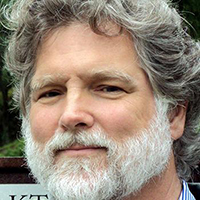
Brent Lane is a Senior Executive in Residence at the Voinovich School of Leadership and Public Service at Ohio University, which he joined in 2020. In his career he has been an early-stage venture capitalist, developed and run business incubators, led state-level economic development programs teams, and directed a university applied economic strategies center. At the Voinovich School he designs and leads in analyses of novel economic and community development opportunities in Appalachian Ohio, especially those capitalizing on the region’s distinctive cultural and natural heritage assets. Brent has earned masters’ degrees in science and technology policy from the George Washington University and in business administration from the University of North Carolina.

Webinar: Historic American Buildings Survey (HABS)
Wednesday, November 15th – 1:00 pm – 2:00 pm
Catherine Lavoie, Chief of the Historic American Buildings Survey (HABS) of the National Park Service (NPS), will talk about the program, how and why it was started, its mission, and its value, with a look at early HABS work in Ohio. HABS was established in 1933 as a unique public-private partnership between NPS, the Library of Congress (LoC), and the American Institute of Architects (AIA) aimed at creating an archive of America’s architectural heritage, then perceived to be rapidly vanishing. Under NPS management, AIA “district officers” in various states across the nation heeded the call to action, selecting and recording sites they deemed worthy of recognition, through measured drawings, historical reports, and photographs. The documentation was housed at the Library of Congress and made available to the general public. While times have changed, HABS still records historic architecture, as well as engineering sites and landscapes, while field testing new technologies to determine best practices and training the next generation of preservationists through its summer student recording program. The collection now spans about 45,000 sites and can be viewed online through the LoC website.
About our presenter:
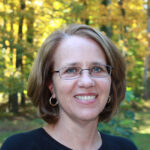
Catherine Lavoie has a master’s degree in American Studies from the University of Maryland with an emphasis in historic preservation and material culture. She worked briefly in state and local preservation before coming to HABS as a historian intern, rising to senior historian, and finally chief in 2008. Catherine is active in the Vernacular Architecture Forum, mostly recently serving as 2nd Vice President and was awarded VAF’s Buchanan Award for excellence in fieldwork and public service (2002) for her HABS study of the Quaker Meeting Houses of the Delaware Valley. Most recently, she co-authored Buildings of Maryland, the latest in the Society of Architectural Historians Buildings of the United States series.

Webinar: Mansions of the Dead
Wednesday, October 18th – 1:00 pm – 2:00 pm
Over 100 early community mausoleums still stand across Ohio. They represent the final resting place of thousands and were viewed with pride and disdain by consumers and community leaders. Ohio was ground zero for the community mausoleums movement that swept across the U.S. in the early decades of the 20th century. The state served as the epicenter for many of the companies, builders and architects who influenced the trend. However, the sustainability of community mausoleums is in peril resulting in their deterioration and destruction.
Inspired by his ancestors who constructed community mausoleums in Indiana, preservationist John Bry has been studying “mansions of the dead” for two decades. He will share the background behind these unique buildings and thoughts on how they can be saved.
About our presenter:
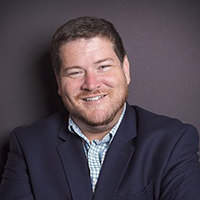
John Bry has 30 years of professional experience in Historic Preservation, community development and Heritage Tourism. He is a native of Auburn, Indiana where he began his interest in Historic Preservation at the age of 13. He holds a bachelor’s and master’s degree in Historic Preservation from Southeast Missouri State University (SEMO) and Ball State University respectively.
He began his Main Street career in 1993 as an intern through the Governor’s Office in his home state being assigned to Indiana Main Street. John went on to serve as the Executive Director for local Main Street communities in Illinois, Indiana, and Ohio for over a decade. He then worked as one of the co state coordinators for Pennsylvania under Bill Fontana for the eastern half of the Commonwealth. He was certified in Main Street in 2002 under the previous program. He diverted his career path for a time with opportunities to work with heritage tourism and community development organizations, but always brought the Main Street Approach to the forefront working with rural and urban communities as part of his role and work.
He has provided technical assistance and training to over 100 community representatives in 15 states in preservation and redevelopment with projects resulting in millions of in investment. He has successfully authored over $6 million dollars in grants for historic preservation, community development and Main Street efforts.
John returned to Main Street fully in 2016 and is now in his 7th year as the Main Street Program Coordinator for Oakland County, Michigan. Oakland County is home to the nation’s only countywide Main Street Program now in its 23rd year. The program serves 28 districts in 27 communities with populations ranging from 600 to 60,000. During John’s tenure, the program has grown to the largest number of participants, has the most private sector partners in its history, created an urban main initiative, and is exploring ways to evolve the Main Street Approach for advanced communities known as “Next Gen”.

Webinar: Tourism in Ohio: What’s Happening and Where are the Opportunities
Wednesday, September 13th – 1:00 pm – 2:00 pm
Get an update on travel trends within the state and among our potential visitors. We’ll spend extra time talking about cultural and heritage tourism, including its importance, what these types of travelers are seeking and how to get their attention. Closing out the webinar, we’ll talk briefly about two opportunities for Ohio communities – America 250 Ohio being celebrated in 2026 and the potential of the Hopewell Ceremonial Earthworks inscription to the World Heritage List in September.
About our presenter:
 Melinda Huntley is the executive director of the Ohio Travel Association (OTA), a nonprofit organization that provides support for museums, attractions, visitor bureaus, retail shops, hotels, restaurants, and other businesses wanting to attract travelers. OTA advocates for smart policies that increase travel in Ohio, produces the state tourism conference, keeps the industry informed on market trends and news, and provides professional development. It also produces Heartland Travel Showcase, a 14-state regional meeting place for buying and selling group tours. With career experience in public relations at Cedar Point, running a CVB along Lake Erie and helping communities develop heritage and outdoor experiences through OSU’s Ohio Sea Grant College Program, she has a unique understanding of opportunities for businesses and communities of any size. She is a Commissioner for America 250 Ohio which will be celebrated in 2026 and serves on multiple national and statewide task forces and boards, including those focused on World Heritage designation, trail development, and educating our youth.
Melinda Huntley is the executive director of the Ohio Travel Association (OTA), a nonprofit organization that provides support for museums, attractions, visitor bureaus, retail shops, hotels, restaurants, and other businesses wanting to attract travelers. OTA advocates for smart policies that increase travel in Ohio, produces the state tourism conference, keeps the industry informed on market trends and news, and provides professional development. It also produces Heartland Travel Showcase, a 14-state regional meeting place for buying and selling group tours. With career experience in public relations at Cedar Point, running a CVB along Lake Erie and helping communities develop heritage and outdoor experiences through OSU’s Ohio Sea Grant College Program, she has a unique understanding of opportunities for businesses and communities of any size. She is a Commissioner for America 250 Ohio which will be celebrated in 2026 and serves on multiple national and statewide task forces and boards, including those focused on World Heritage designation, trail development, and educating our youth.


